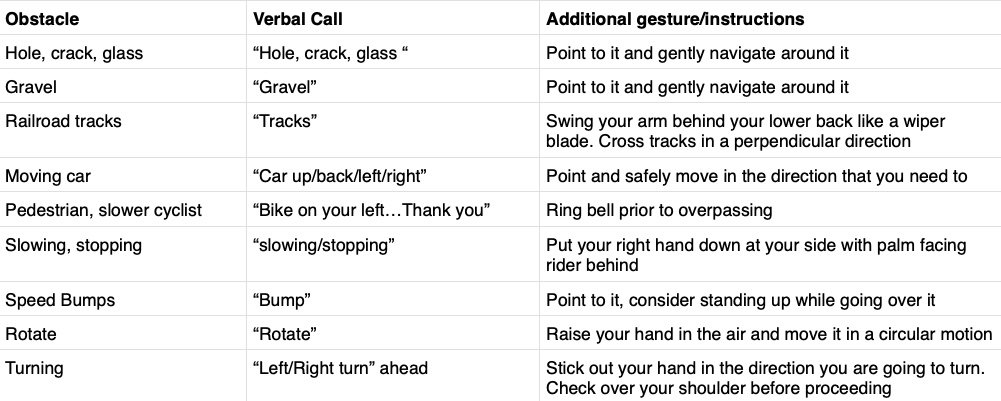Riding Etiquette
This section is intended to be a quick reference. Please refer to the Member Handbook for full details.
How we ride together
Most often, we ride in a double line, where we pair up to ride two-by-two. If road conditions require that we go single file, the Ride Leader will call “Single File!" As a group, we always aim to ride predictably and smoothly, avoiding sudden actions that could surprise riders and traffic around us. On no-drop, “all-together” rides (Social & B group) we ride as fast as the slowest rider to ensure that the group is together and no one gets overextended or frustrated.
Ride handlebar to handlebar with your partner in line: do not overlap wheels with another rider.
We encourage each other, lead by example and provide advice intended to help other riders be safe and improve their skills.
Top 10 rules of group riding
Obey all traffic laws and rules of the road.
It is the responsibility of every rider to maintain a tight bunch. Do your part to keep a tight formation. Ride bar-to-bar with the person beside you to avoid the risk of wheel overlap. If you’re in the lead position do not half wheel.
Use hand signals and point out obstacles for other riders. If you don’t have time to use hand signals, use your voice: “Stopping!” Use your voice for other calls such as “Car up!” or “Car back!” If you are in the middle of the bunch, relay hand signals and calls so everyone is aware.
Maintain a constant even and predictable pedal stroke. Soft pedal instead of coasting. Do not throw down a power surge on inclines. Be constantly aware of your speed and position (bar-to-bar) relative to the other riders around you so you don’t half-wheel or overlap wheels accidentally.
When starting up (traffic light, stop sign, group stop), the riders on the front must soft pedal (ride intentionally slow) to wait for all riders behind to clip in. Check that the group is all together and then gradually increase speed.
If you are going to stand up and ride out of the saddle, make sure you do it at the top of your pedal stroke with downward pressure on the pedal to minimize the degree your bike shoots backward: thus you will avoid surprising the rider behind you who could crash into you if they aren’t ready to compensate for your sudden action.
If passing/overtaking other riders, first check behind you for cars or other riders, then pass ONLY on the left of the rider you are overtaking. This rule applies especially to hill climbs. Never ride 3 abreast.
Be aware of what is going on around you and communicate to others: tell other riders/Ride Leader if there is a split in the group. Call “Pace!” if it is too fast. The last riders in the group should yell “Back on” once they have caught up
Rotate at regular intervals, especially on hot days or windy weather. This will help to keep your fellow riders from exhaustion.
If you leave a ride before it ends, tell the Ride Leader or other riders that you are leaving.
Communicating in the group
The following table is a list of common calls/signals used to communicate in an LCC group ride:
Have any questions? Ask your Ride Leader. They’re are there to help.
Here is a great video from the GCN Network that fits with our approach to group riding:



